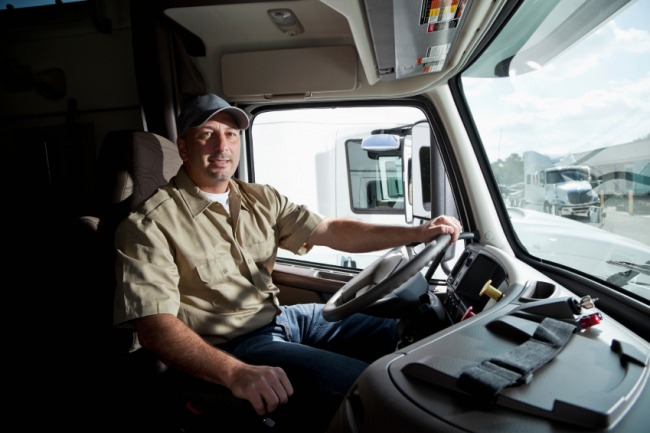BLOG
How Tax Liability Increases Driver Turnover

We all know that one of the most vexing problems plaguing the trucking industry today is driver turnover and the expense and havoc it creates throughout virtually every trucking organization. We also know that the reasons for driver turnover are not uniform nor predictable and vary dramatically by region, by company and by your operating practices and business model.
Traditional Reasons Drivers Quit
Pay: The perception that the “other company” always pays more and provides better benefits and delivers more miles.
Time at Home: This isn’t the 50s, and family needs and pressures have become a huge catalyst for drivers leaving companies or getting out of the business entirely.
Broken Promises: Driver turnover is particularly acute with new hires who quit within 90 days of accepting the job, underscoring the perceived gap between what they felt they were told and promised when recruited, versus the reality they experienced once hired.
Aggregate of the Small: This can be the most devastating exit trigger many trucking companies experience and the most frustrating to identify and cure. Like many divorces, truck drivers who quit don’t have one big reason for exit. They simply have an accumulated frustration with a multitude of small - even tiny - irritants that over time will cause dissatisfaction and eventual exit. You name it: payroll, operations, maintenance, delays, etc.. It adds up and proves the old adage that 100 thumbtacks can be as destructive as one railroad spike.
Dissatisfaction with Management: Often overlooked but a huge reason for much of current driver turnover. The old adage is definitely true today: “People don’t quit companies. They quit managers!”
The Impact of Old Equipment on Driver Retention
None of these universal disengagement triggers should come as any surprise to seasoned trucking executives. Whether we accept and act upon them is the million dollar question.
I worked for a national consulting company that interviewed 100,000 drivers during a five-year period. We were surprised by how often aging equipment was cited as a reason for leaving. That’s right; the age of your truck fleet impacts driver satisfaction and retention!
Consider what drivers experience working for trucking companies that try and cut costs by holding on to their fleet longer than they should:
- Increased Risk of CSA Violations: It’s common sense that a truck on the fringe of maintenance issues and expense will have a higher potential for unforeseen failure or problems that could tag the driver with a safety violation.
- Increased Discomfort: As drivers realize they are not getting the same “features and benefits” that the newer trucks provide.
- Increased Driving Frustration: Let’s face it, driving an old truck is simply not as enjoyable as driving a new truck, especially given the pace of improvements in the later model tractors.
- "Truck Envy": As your drivers routinely see drivers with other companies at truck stops and on the road sporting brand new state of the art tractors, the attraction of staying with YOUR company is greatly diminished.
In other words, the way you manage your fleet's finances can have an impact on driver retention. One way to free up funds for updating your equipment is to implement a 1031 like-kind exchange program.
Use a Like-Kind Exchange to Update your Fleet and Reduce Driver Turnover
1031 like-kind exchanges can instantly free up a lot of extra cash that you are currently paying in taxes on the sale of your used equipment - tractors in particular. With bonus depreciation expired, trucking companies are paying between 38%-50% income tax on the sale of their used tractors. That can add up to paying the government up to $17,500 on every used tractor you sell! That's the kind of expense that delays the purchase of new replacement equipment, with predictable driver turnover consequences.
Consider the following example, which illustrates what happens when 100 trucks (purchased new for $120,000 each) are then sold for $35,000 each:
| Without LKE | With LKE | |
|---|---|---|
| Original equipment cost | $12,000,000 | $12,000,000 |
| Tax depreciation allowed | $12,000,000 | $12,000,000 |
| Tax basis at sale | $0 | $0 |
| Sales proceeds | $3,500,000 | $3,500,000 |
| Gain on sale | $3,500,000 | $3,500,000 |
| Tax due on gain (40%) | $1,400,000 | $0 |
| Cash available for new equipment | $2,100,000 | $3,500,000 |
With only 100 trucks, a 1031 like-kind exchange program would have provided $1.4 million additional dollars for the purchase of new tractors. The LKE program converted those tax dollars into extra cash to spend on new equipment. Trucking companies using LKEs are tapping into an interest-free source of capital to keep their businesses rolling and to reduce their driver dissatisfaction with driving older vehicles. The cash benefit via the tax deferral is essentially a line of credit you control - and you decide when to pay back.
The trucking industry is extremely competitive. Your ability to retain your best drivers is absolutely critical to your long term success. Companies that are able to generate this huge amount of extra cash via tax deferral are able to purchase more new tractors more frequently. The ability to upgrade and modernize your fleet is a crucial component of keeping drivers happy, satisfied and working for your company longer.
So the next time you look at your fleet, ask yourself this question: Would the best drivers want to drive that truck?
